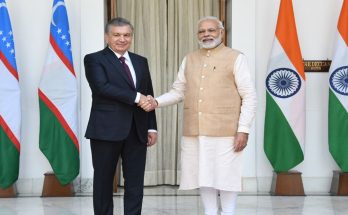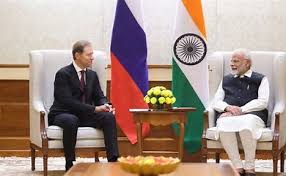On August 24, India’s stock markets witnessed a Black Monday with the Sensex falling over 1,600 points. Panic did strike the markets and the depreciation of the rupee only added to the worries. India’s Finance Minister Arun Jaitley and Governor of Reserve Bank of India Raghuram Rajan came out to reassure the investors that it is only a temporary pain that India had to endure. Overall, the fundamentals were very strong and the market mayhem was more due to the ongoing economic crisis in China, they said.
Interconnected markets
In today’s global integrated markets any crisis in any part of the world is likely to impact markets world over. The impact of such a crisis on different markets varies from country to country, based on their exposure to the crisis-hit markets. China has been seeing its stock markets and real economy slump over the past few weeks. And when the world’s second largest economy took a hit and witnessed a steep fall in recent times, it was bound to create panic across the global markets.
2008 crisis: Response of India and China
China’s surprise move to devaluate its currency sent ripples across markets. The Shanghai Composite Index dropped 8.5 percent that led to sell off in stocks and commodities around the markets in the world. During the 2008 global financial crisis China was seen as a shock absorber and even India did well to weather the crisis at that point of time. Both the countries were cited as examples of resilience to global shocks worldwide.
While India did slow down in subsequent years due to a combination of domestic and global factors, it still outperformed most of its peers in the emerging markets, with only China being better off. Seven years later, the situation seemed to have changed. Now China is seen as the one creating shocks in the world rather than being resilient to shocks, while India continues to hold fort and seems to be the more reassuring of the two countries.
China, that was seen as the global rescuer of growth, can no longer claim to be one after the recent crisis that plagued the country and the world markets at large. In an interview to the BBC, Finance Minister Jaitley had recently said that India can now be the driver of global growth and replace China. Mr Rajan took a more cautious position, saying India still has a long way to go and it will be ‘a long time’ before India can replace China as a growth engine for the global economy, even if it grows at a faster rate. However, Mr Rajan later went on to add that it is different this time with India as it is picking up now and is no longer in the list of ‘Fragile Five’ or ‘Troubled 10’ economies of the world and will withstand the shocks.
Advantage India
So what makes India look like a more attractive proposition at this time? While there are many reasons to it, the biggest positive for India is that its fundamentals are pretty strong and as the credit rating agency Moody’s recently pointed out India’s macroeconomic indicators have improved over the last few years which will help the country withstand volatility in global capital inflows in the coming few months. India’s GDP growth is estimated to grow at 8 percent per annum while China is said to slide below the 7 percent mark after nearly 25 years. India’s improved industrial output, lower trade deficit, healthier public finances, retail and wholesale inflation at manageable levels, manageable current account deficit and, most importantly, a high domestic consumption make India a more positive destination.
China, on the other hand, is slowing. It has little room for further stimulus while India can absorb trillions in infrastructure alone. China also has an aged working population while India has favourable demographics with a majority of the population below the age of 35. Domestic consumption in China is much lower while it is very high in India.
China’s debt levels have also reached alarming positions and as some analysts say it may even be around 282 percent which is huge. India, on the other hand, has more manageable debt levels which would help in accelerating growth and development. The property bubble in China which has created a major worry with declining property prices would create more stress and dent domestic consumption. China is also having deflationary concerns which could depress it further while India is trying to control inflation and is in a better position to cut interest rates that could help stimulate the economy.
Apart from the pending economic reforms such as the Goods and Services Tax (GST), removing retrospective taxation and a host of other reforms, India seems to have had a more balanced growth and strengthening of macro fundamentals over the years. From a time when India had a balance of payment crisis in 1991 to becoming Asia’s third largest economy and the world’s fastest growing economy with strong fundamentals, India has come a long way.
Keeping the political differences aside, over the last two decades successive governments in India and the Reserve Bank of India should be given equal credit for making India fundamentally strong over the years. India could well play a crucial role in driving the global economy with a strong base. India may still have a long way to go, but the crisis in China is definitely a big opportunity for India to strengthen its economy.
Author Profile
- India Writes Network (www.indiawrites.org) is an emerging think tank and a media-publishing company focused on international affairs & the India Story. Centre for Global India Insights is the research arm of India Writes Network. To subscribe to India and the World, write to editor@indiawrites.org. A venture of TGII Media Private Limited, a leading media, publishing and consultancy company, IWN has carved a niche for balanced and exhaustive reporting and analysis of international affairs. Eminent personalities, politicians, diplomats, authors, strategy gurus and news-makers have contributed to India Writes Network, as also “India and the World,” a magazine focused on global affairs.
Latest entries
 India and the WorldNovember 26, 2025G20@20: Africa’s Moment – The Once and Future World Order
India and the WorldNovember 26, 2025G20@20: Africa’s Moment – The Once and Future World Order DiplomacyOctober 4, 2025UNGA Resolution 2758 Must Not Be Distorted, One-China Principle Brooks No Challenge
DiplomacyOctober 4, 2025UNGA Resolution 2758 Must Not Be Distorted, One-China Principle Brooks No Challenge India and the WorldJuly 26, 2025MPs, diplomats laud Operation Sindoor, call for national unity to combat Pakistan-sponsored terror
India and the WorldJuly 26, 2025MPs, diplomats laud Operation Sindoor, call for national unity to combat Pakistan-sponsored terror India and the WorldJuly 25, 2025When Fire Ends, Diplomacy Begins
India and the WorldJuly 25, 2025When Fire Ends, Diplomacy Begins








